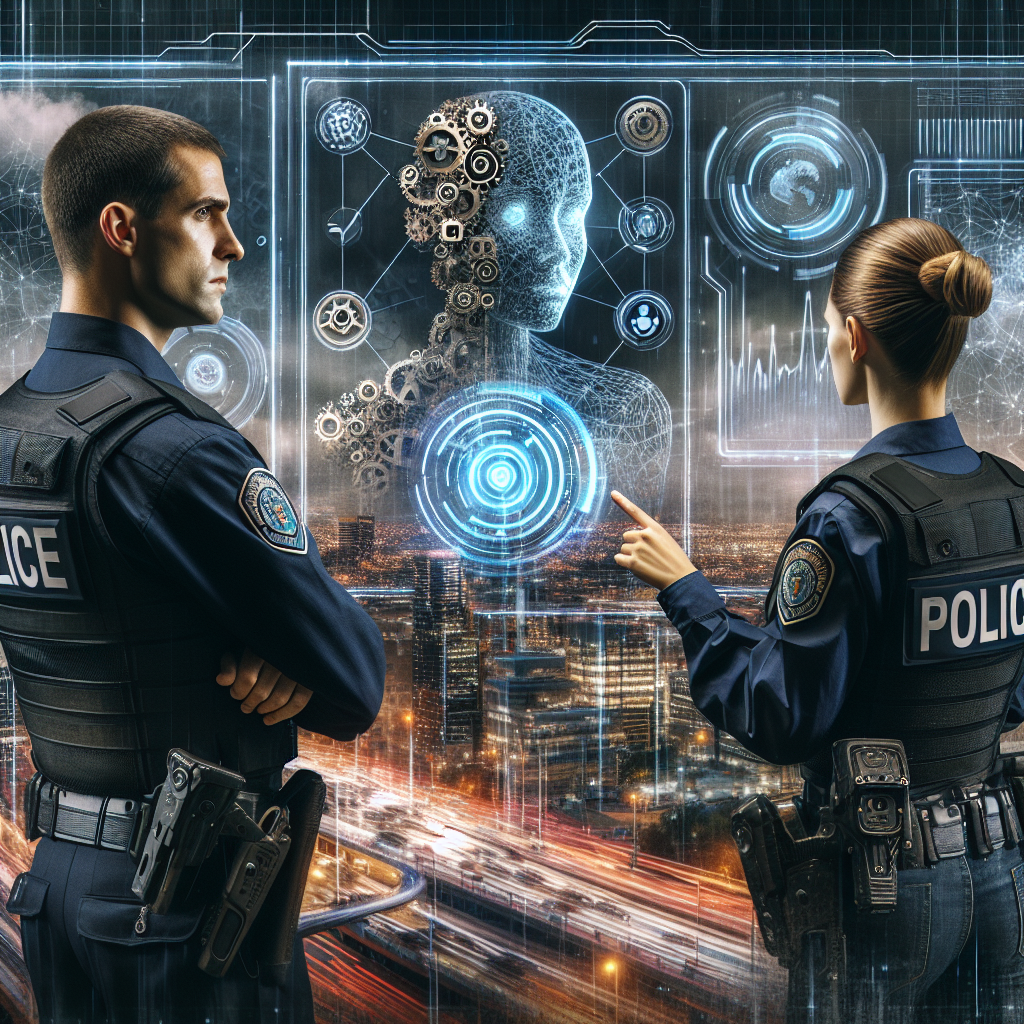AI-Driven Solutions: A Game Changer for Law Enforcement and Public Safety
Artificial intelligence (AI) has revolutionized various industries, including law enforcement and public safety. With the use of AI-driven solutions, law enforcement agencies and public safety organizations can now better predict, prevent, and respond to crimes and emergencies. These technologies have the potential to significantly improve the efficiency and effectiveness of law enforcement operations, ultimately making our communities safer.
AI-driven solutions in law enforcement and public safety encompass a wide range of applications, from predictive policing and facial recognition to real-time crime monitoring and emergency response systems. These technologies leverage advanced algorithms and machine learning techniques to analyze vast amounts of data and identify patterns, trends, and anomalies that can help law enforcement agencies make better-informed decisions and take proactive measures to prevent crimes and ensure public safety.
One of the key advantages of AI-driven solutions is their ability to process and analyze data at a speed and scale that is simply not possible for human operators. This allows law enforcement agencies to quickly identify emerging threats, allocate resources more effectively, and respond to incidents in real-time. For example, predictive policing algorithms can analyze historical crime data and other relevant information to forecast where crimes are likely to occur, enabling law enforcement agencies to deploy officers to those areas proactively.
Facial recognition technology is another powerful tool that is being increasingly used by law enforcement agencies to identify suspects, locate missing persons, and enhance public safety. By comparing images captured from surveillance cameras or other sources against a database of known individuals, facial recognition algorithms can quickly identify and track individuals of interest, even in crowded or complex environments.
Real-time crime monitoring systems are also becoming more prevalent in law enforcement, allowing agencies to monitor and analyze live video feeds, social media posts, and other data sources for suspicious activity or potential threats. By leveraging AI-powered analytics, these systems can automatically flag and prioritize incidents based on their severity, location, and other factors, enabling law enforcement agencies to respond more effectively and efficiently.
In addition to crime prevention and detection, AI-driven solutions are also being used to enhance emergency response and disaster management. For example, chatbots and virtual assistants powered by AI can help dispatchers and first responders quickly assess and triage emergency calls, providing critical information and support in real-time. Drones equipped with AI-powered sensors and cameras can also be used to survey disaster areas, assess damage, and locate survivors, enabling faster and more effective response efforts.
Despite the many benefits of AI-driven solutions in law enforcement and public safety, there are also concerns and challenges that must be addressed. One of the main issues is the potential for bias and discrimination in AI algorithms, which can lead to unfair or inaccurate outcomes, particularly in the context of facial recognition and predictive policing. To mitigate these risks, it is important for law enforcement agencies to carefully evaluate and test AI algorithms for bias and ensure that they are transparent and accountable in their use of these technologies.
Privacy and data security are also major concerns when it comes to AI-driven solutions in law enforcement and public safety. The use of surveillance cameras, drones, and other technologies that capture and analyze personal data can raise serious privacy implications, especially if this information is not properly protected or used inappropriately. It is essential for law enforcement agencies to implement robust data protection measures and adhere to strict privacy regulations to ensure the rights and freedoms of individuals are respected.
Another challenge is the potential impact of AI-driven solutions on human decision-making and autonomy in law enforcement. While AI technologies can enhance the speed and accuracy of data analysis, they should not replace human judgment or override ethical considerations in policing and public safety. It is crucial for law enforcement agencies to strike a balance between leveraging AI as a tool to support and augment human decision-making, rather than relying on it as a sole determinant of actions.
Overall, AI-driven solutions have the potential to be a game changer for law enforcement and public safety, providing new capabilities and insights that can help agencies better protect and serve their communities. By harnessing the power of AI technologies responsibly and ethically, law enforcement agencies can improve their operational efficiency, enhance public safety, and build trust with the communities they serve.
FAQs
Q: What are some examples of AI-driven solutions in law enforcement and public safety?
A: Some examples of AI-driven solutions in law enforcement and public safety include predictive policing algorithms, facial recognition technology, real-time crime monitoring systems, emergency response chatbots, and drones equipped with AI-powered sensors.
Q: How do AI-driven solutions help law enforcement agencies prevent and respond to crimes?
A: AI-driven solutions help law enforcement agencies prevent and respond to crimes by analyzing data to identify patterns and trends, predicting where crimes are likely to occur, monitoring for suspicious activity in real-time, and enhancing emergency response and disaster management efforts.
Q: What are some of the challenges and concerns associated with AI-driven solutions in law enforcement and public safety?
A: Some of the challenges and concerns associated with AI-driven solutions in law enforcement and public safety include bias and discrimination in AI algorithms, privacy and data security risks, and the potential impact on human decision-making and autonomy in policing.
Q: How can law enforcement agencies address the risks and challenges of using AI-driven solutions?
A: Law enforcement agencies can address the risks and challenges of using AI-driven solutions by evaluating and testing AI algorithms for bias, implementing robust data protection measures, adhering to strict privacy regulations, and ensuring that AI technologies are used responsibly and ethically to support human decision-making.

